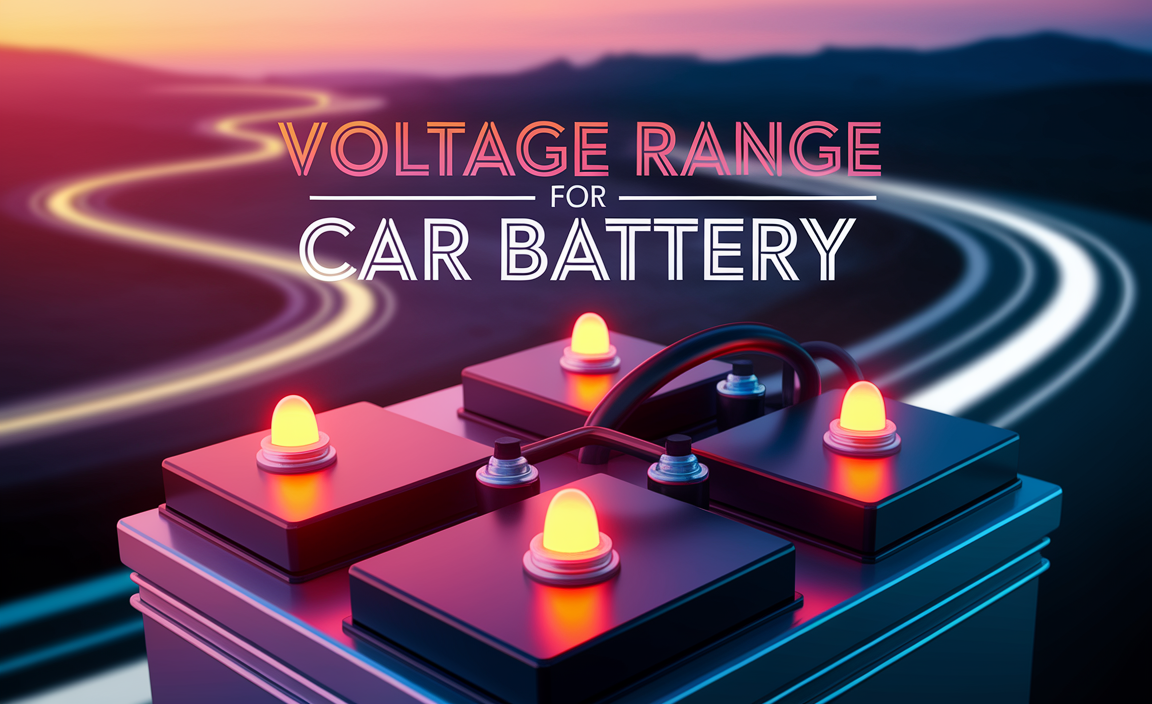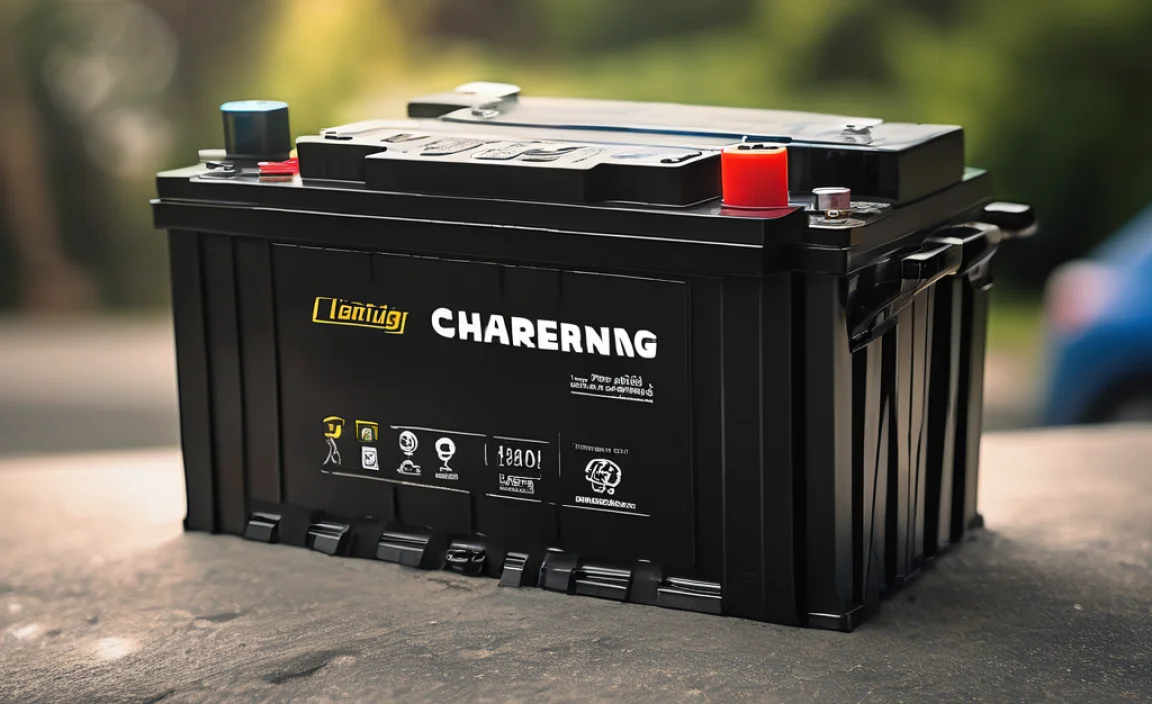Upgrade your garden with solar power batteries for garden lights! This guide explains how to choose, install, and maintain them for beautiful, eco-friendly outdoor lighting.
Tired of tangled wires or dark garden paths at night? Solar garden lights offer a wonderful solution, and at their heart are the tiny but mighty solar power batteries. These batteries are what capture the sun’s energy during the day and power your lights when it gets dark. When they stop working as well, it can be frustrating. But don’t worry! With a little know-how, you can easily understand these batteries, pick the right ones, and keep your garden glowing all year round. This guide will walk you through everything you need to know, making it simple and stress-free.
Understanding Solar Power Batteries for Garden Lights
Solar garden lights are like mini power plants for your yard. During the day, a small solar panel on the light collects sunlight. This energy is then stored in a rechargeable battery. When evening arrives, the light sensor tells the battery to send power to the LED bulb, illuminating your garden.
The type of battery used is crucial for how long your lights will shine and how long they will last. For most garden lights, you’ll find two main types of rechargeable batteries:
- Nickel-Metal Hydride (NiMH): These are common, generally affordable, and can handle cold temperatures better than some other types. They are a good all-around choice for many garden lights.
- Lithium-ion (Li-ion): These batteries are lighter, hold more charge for their size, and often last longer than NiMH batteries. They are becoming more popular in newer, higher-quality solar lights.
Over time, like the battery in your phone or car, these batteries can lose their ability to hold a charge. This is normal! Sunlight isn’t as strong in winter, and a battery that’s been cycling through charging and discharging for a few years will eventually wear out. The good news is that replacing them is usually straightforward.
Why Replace Your Solar Garden Light Batteries?
You’ll know it’s time to consider replacing the batteries in your solar garden lights when you notice a few common signs:
- Lights not turning on at all. Even on a sunny day, if your lights remain stubbornly dark after dusk, the battery might be completely dead or unable to hold any charge.
- Lights dimming very quickly. If your lights used to stay bright all night but now fade to a dim glow just an hour or two after sunset, the battery’s capacity has likely decreased significantly.
- Lights only staying on for a short period. If they used to last until midnight and now only manage a couple of hours, it’s a clear sign the battery isn’t storing enough power.
- Lights flickering or cutting out. An inconsistent performance can also point to a failing battery that can’t provide a steady stream of power.
Replacing the batteries is often much more cost-effective and environmentally friendly than buying entirely new solar lights. It’s a simple DIY task that can give your outdoor lighting a new lease on life.
Choosing the Right Replacement Batteries: A Practical Guide
Picking the correct replacement batteries is key to ensuring your solar lights work efficiently. Here’s what to look for:
1. Battery Type
As mentioned, most solar garden lights use either NiMH or Li-ion batteries. Check your existing light or its manual to see what type it uses. If you can’t find a manual, carefully remove the old battery and check for markings on its casing. NiMH batteries are usually labeled “NiMH,” and Li-ion batteries might be labeled “Li-ion” or “Lithium.”
2. Battery Size and Shape
Solar garden lights typically use small, cylindrical batteries. The most common sizes are:
- AA (Double A): These are very common and often found in standard-sized solar lights.
- AAA (Triple A): These are smaller than AA batteries and are used in smaller, more delicate solar lights.
Ensure you get the same size battery that came with your light. A battery that’s too large won’t fit, and one that’s too small might not make proper contact for charging or power delivery.
3. Battery Capacity (mAh)
Capacity is measured in milliampere-hours (mAh). A higher mAh rating means the battery can store more energy, potentially allowing your lights to shine brighter or for longer periods. If you’re replacing NiMH batteries, you can often upgrade to a higher mAh rating within the same battery size (e.g., from a 600mAh AA to an 800mAh AA) if the battery compartment allows. However, don’t go too high, as it might not fully charge with the small solar panel.
For Li-ion batteries, capacity matters too, but also consider the voltage. Ensure the voltage matches your original battery. Common voltages for Li-ion in garden lights are 3.7V.
4. Voltage (V)
This is crucial. The voltage of the replacement battery must match the original. Using a battery with the wrong voltage can damage the light’s electronics or prevent it from working correctly. Check the old battery closely for its voltage marking (e.g., 1.2V for NiMH, 3.7V for Li-ion).
5. Rechargeability
Ensure you are buying rechargeable batteries specifically designed for solar applications! Disposable batteries (alkaline) will not work and can be dangerous if you try to charge them.
Where to Find Replacements
You can usually find suitable replacement batteries at:
- Hardware stores
- Electronics stores
- Online retailers like Amazon, eBay, or specialized battery sites.
When shopping online, pay close attention to the product descriptions to ensure you’re getting the right type, size, and voltage.
Step-by-Step: Replacing Batteries in Your Solar Garden Lights
Replacing the batteries in your solar garden lights is a simple process that most people can do with common household tools. Here’s how:
Tools You Might Need
- A small Phillips head screwdriver (often size #1 or #2)
- A flathead screwdriver (sometimes needed to gently pry open a compartment)
- Paper towel or a soft cloth
- Your new replacement batteries
The Process
- Safety First: Make sure the light is off and has had time to discharge any residual power. If the light has an on/off switch, turn it off. It’s also a good idea to cover the solar panel with an opaque material (like tape or a piece of cardboard) to prevent it from accidentally activating while you’re working.
- Locate the Battery Compartment: Most solar garden lights have the battery compartment located either underneath the solar panel housing or at the very top of the unit. You might need to unscrew a small cap or panel to access it. Look for any visible screws or seam lines.
- Remove the Old Battery:
- If there’s a battery cover or compartment door, carefully unscrew it.
- Once the compartment is open, you should see the old battery. Sometimes there’s a small plastic tab or spring holding it in place.
- Gently pull out the old battery. If it’s stuck, you can use the plastic end of a non-metal tool or your fingernail to ease it out. Avoid using metal screwdrivers to pry out batteries if possible, as this could short-circuit the battery or damage the compartment.
- Note the orientation of the battery (which way the positive (+) and negative (-) ends are facing). This is important for installing the new one correctly.
- Prepare the New Battery:
- Take your new, matching rechargeable battery.
- If it has protective plastic wrapping, carefully remove it.
- Gently wipe the terminals (the positive and negative ends) of the new battery with a dry paper towel or soft cloth. This ensures good contact.
- Crucially, ensure the new battery is the correct type (NiMH or Li-ion), size (AA or AAA), and voltage (V) as the old one.
- Insert the New Battery:
- Place the new battery into the compartment, making sure the positive (+) and negative (-) ends are aligned exactly as the old one was. They usually only fit one way.
- Ensure the battery is seated firmly and makes good contact with the terminals.
- Close the Battery Compartment:
- Replace the battery cover or compartment door.
- If you removed screws, screw them back in securely, but don’t overtighten them, as this can strip the threads or crack the plastic.
- Test the Light:
- Place the solar garden light back in its usual spot where it gets plenty of direct sunlight.
- Remove any tape or cover you used on the solar panel earlier.
- Wait until it gets dark. The light should turn on automatically. If it doesn’t, recheck that the battery is installed correctly and that the light has been receiving sufficient direct sunlight throughout the day. For some lights, you might need to press a small button to turn them back on after replacing the battery; check your light’s instructions.
It’s always a good idea to replace batteries in sets. If one battery in your light has failed, the others might be close behind. Replacing them all at once ensures consistent performance and avoids having to do the job again too soon.
Maintaining Your Solar Garden Lights for Longevity
Keeping your solar garden lights in tip-top shape doesn’t require much effort, but a little regular care can go a long way in extending their lifespan and ensuring they perform their best. Think of it like giving your car a regular wash and checking its tires – small things make a big difference.
1. Keep Solar Panels Clean
Over time, dust, pollen, bird droppings, and grime can build up on the solar panels. This dirt blocks the sunlight from reaching the cells, significantly reducing the battery’s charging efficiency. Even on a sunny day, a dirty panel means less energy stored.
- How to clean: On a dry day, use a soft, damp cloth – perhaps with a tiny drop of mild dish soap if there’s stubborn gunk. Wipe the panel gently. Avoid abrasive cleaners or scrub brushes, as these can scratch the surface and impair its ability to absorb sunlight.
- Frequency: Aim to clean them every few weeks, or more often if you live in a dusty or high-pollen area.
2. Ensure Proper Sunlight Exposure
Solar lights need direct sunlight to charge effectively. If you notice your lights aren’t lasting as long as they used to, check their placement. Trees that have grown, new bushes, or even adjacent garden structures can cast shadows on the lights during the day.
- What to do: Periodically assess the path of the sun over your garden. If a light is consistently shaded during the prime sun hours (typically between 10 am and 4 pm), consider moving it to a sunnier spot.
- Seasonal changes: Remember that the sun’s angle changes throughout the year. A spot that gets full sun in summer might be shaded by a deciduous tree losing its leaves in winter but with branches that still cast a shadow.
- External Link: For more on optimizing solar power generation, understanding solar irradiance and shading is key. You can find helpful information from resources like the National Renewable Energy Laboratory (NREL), which provides insights into solar energy basics.
3. Protect from Extreme Weather
While most solar garden lights are designed to be weather-resistant, prolonged exposure to harsh conditions can still take a toll.
- Frost and Snow: In areas with heavy frost or snowfall, consider bringing your solar lights indoors during the winter months. This protects them from moisture ingress and physical damage from ice or snow accumulation.
- Excessive Heat: Extreme heat can also degrade battery performance and components over time. While you can’t control the weather, ensuring good ventilation around the solar panel might help slightly.
4. Check for Corrosion and Damage
Occasionally inspect the battery compartment and electrical contacts for any signs of corrosion (a powdery or greenish residue) or physical damage.
- How to clean corrosion: If you spot corrosion, you can often clean it gently with a pencil eraser or a cotton swab dipped in a solution of baking soda and water. Make sure the compartment is completely dry before inserting new batteries.
- Damage: If you find cracks in the housing or significant damage to the solar panel, it might be difficult to repair, and you may need to consider replacing the unit.
5. Use Quality Batteries
When you do replace the batteries, opting for reputable brands and higher-quality rechargeable batteries can make a difference. They tend to hold their charge better and last for more charging cycles, meaning you won’t be replacing them as frequently.
By following these simple maintenance tips, you can ensure your solar garden lights continue to provide beautiful ambiance and practical illumination for your outdoor spaces for years to come.
Troubleshooting Common Solar Light Battery Issues
Even with the best care, you might run into a few hiccups with your solar garden lights. Here are some common problems related to batteries and how to fix them.
Problem 1: Lights Not Charging
Possible Causes & Solutions
- Dirty Solar Panel: As discussed in maintenance, a dirty panel is a prime suspect. Clean it thoroughly with a soft, damp cloth.
- Insufficient Sunlight: The light might not be getting enough direct sunlight during the day. Check for new shadows from growing plants or structures and reposition the light if necessary.
- Faulty Battery: The rechargeable battery may no longer be able to hold a charge. Try replacing it with a new, compatible rechargeable battery.
- Internal Battery Issue: Sometimes the connection inside the light is loose or damaged. If you’ve replaced the battery and cleaned the panel, and it’s still not charging, there might be an internal fault in the wiring or charging circuit.
Problem 2: Lights Die Too Soon or Are Dim
Possible Causes & Solutions
- Worn-Out Battery: The battery has reached the end of its lifespan and can’t hold enough charge to power the light for the whole night. Replace the battery.
- Low Capacity Battery: If you recently replaced the battery and the issue persists, the replacement might have a lower mAh rating than ideal, or it might be a lower quality battery.
- Partial Charge: If the light didn’t get a full day of direct sunlight, it might only have a partial charge, leading to dimness or premature shutoff. Ensure it has at least 6-8 hours of direct sun.
- LED Bulb Lifespan: While less common, the LED bulb itself can degrade over time, becoming dimmer. However, this usually happens much later than battery failure.
Problem 3: Lights Turn On During the Day
Possible Causes & Solutions
- Light Sensor Malfunction: Most solar lights have a light-sensitive sensor that turns them on when it gets dark. If this sensor is faulty or covered, the light might activate in daylight.
- Obstruction of Sensor: Ensure nothing is covering the optical sensor, such as dirt, debris, or even a leaf. Clean the sensor area.
- Incorrect Battery Type/Voltage: Using a battery with the wrong voltage can sometimes interfere with the light sensor’s operation.
- Internal Circuitry Problem: This is a less common issue, but a fault in the light’s internal circuitry could cause it to misinterpret light levels.
Problem 4: Battery Compartment is Corroded or Damaged
Possible Causes & Solutions
- Moisture Ingress: Seals can degrade over time, allowing rain or dew to enter the compartment.
- Cleaning: Clean mild corrosion with a pencil eraser or a cotton swab dipped in a baking soda/water solution. Dry thoroughly.
- Severe Damage: If the compartment is extensively corroded or cracked, it might be difficult to get a good connection or prevent further moisture damage. In such cases, replacing the entire light unit might be the most practical solution.
When troubleshooting, always start with the simplest solutions first – cleaning the panel, checking sunlight, and ensuring the battery is correctly installed. Often, these basic checks resolve the majority of issues.
Battery Specifications for Common Solar Garden Lights
To help you make an informed choice when purchasing replacement batteries, here’s a table outlining typical specifications for batteries used in solar garden lights. Remember to always check your specific light model for exact requirements.
| Battery Type | Common Sizes | Typical Voltage (V) | Typical Capacity (mAh) | Pros |
|---|




